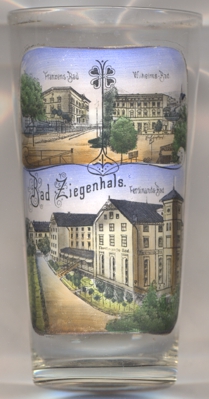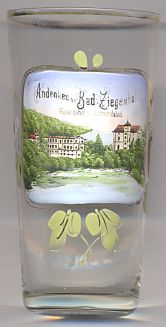

|
| POLSKA | POLAND |
| województwo: Opolskie | voivodship: Opole |
| powiat: Nysa | county: Nysa |
Głuchołazy is situated at an elevation of 294 m at the river Biała Głuchołaska in the Nysa county of the Opole voivodship in southern Poland. The municipality has a population of about 13,500 (2019); it is also the seat of the gmina ('urban-rural district') of the same name (population about 23,700 as of 2019).
German settlers were called into the region around 1220 by the bishop of Breslau (today Wrocław). Already in 1263 the settlement, then called Ziegenhals in German, had obtained the status of a town. During the 16th and 17th century, Ziegenhals was mainly a town of miners who worked in the gold and iron ore mines of the region. The gold mines were very likely not as profitable as those of the nearby Zuckmantel (Cukmantl, Zlaté Hory, CZ). When most of Silesia became part of Prussia in 1742, Ziegenhals became a Prussian border town while Zuckmantel remained in Austrian Silesia. In the following decades Ziegenhals became known as a town of clothmakers. In 1874 the was connected to the railroad system. Since the end of the 19th century, Ziegenhals was also known as a spa place (hence the predicate 'Bad', 'spa', in the German name of the town). Since 1945 it is part of Poland.

The pictures on glass no. 4024 [left] show three of Głuchołazy's former bath houses:
 Franzensbad
Franzensbad
 Wilhelmsbad
Wilhelmsbad
 Ferdinandsbad
Ferdinandsbad

The picture on glass no. 2179 [near left: no. 2179] shows the bath houses
 Hedwigshof
Hedwigshof
[https://de.wikipedia.org/wiki/G%C5%82ucho%C5%82az, https://en.wikipedia.org/wiki/G%C5%82ucho%C5%82azy; https://en.wikipedia.org/wiki/Gmina_G%C5%82ucho%C5%82azy;
https://silo.tips/downloadFile/turystyczne-tradycje-turisticke-tradice-touristische-traditionen-pogranicza-nysk;
https://turystyka.glucholazy.pl/1293/szlak-miejski-w-glucholazach.html]
![[scale]](lineal.jpg)